Skateboard Purchasing Guide for Intermediate Skaters
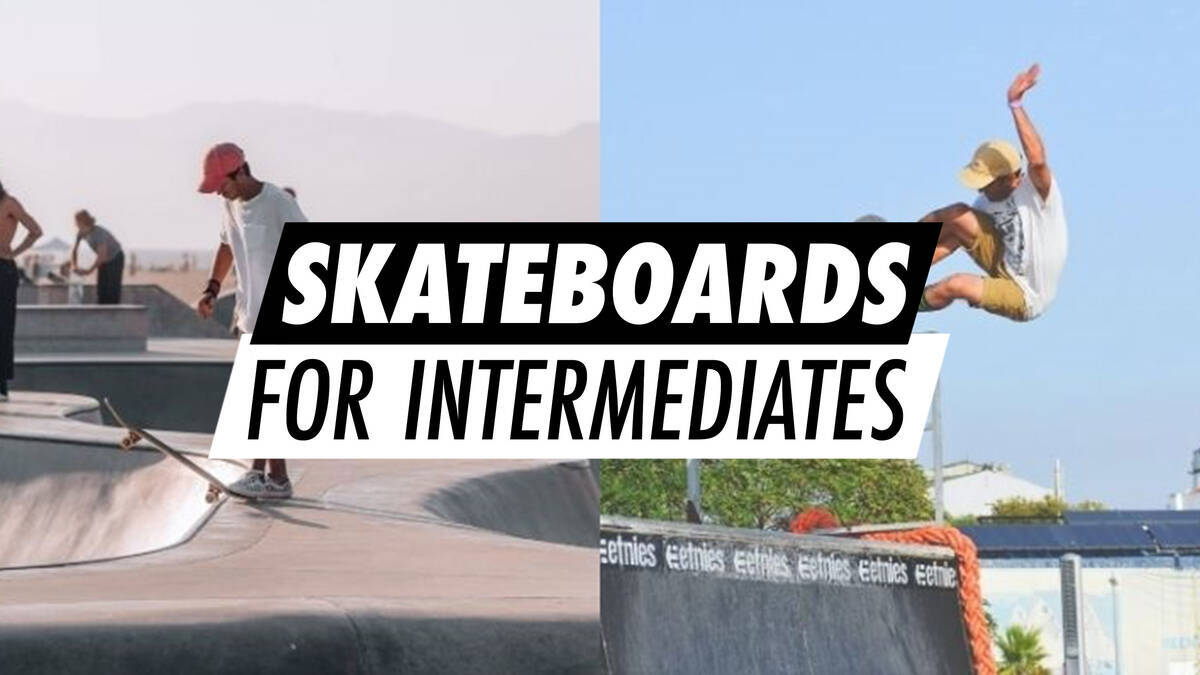
Whether you are opting for a new complete skateboard, or you are upgrading your current setup with premium parts, this guide aims to offer you the advice necessary for purchasing the best-suited skateboard for an intermediate skateboarder, concentrating on honing skills and mastering new tricks.
Overview
Overview
Varieties of Skateboards – Different Boards for Diverse Styles

Every skateboard comprises a deck, two trucks, and four wheels, but specifications and measurements differ. Hence, it is important to question: What style of skateboarder am I?
Are you keen on technical flip tricks, or are you also enthusiastic about large stairs? Do you favour street locations, skateparks, or transition skateboarding such as vert and bowls? Your skateboarding style significantly impacts selecting a skateboard tailored to your preferences.
Nevertheless, most skateboarders do not restrict themselves to one skateboarding genre, and it would also be uninteresting to confine yourself strictly to one discipline. Multiple skateboards are not a necessity for each skateboarding type, but focusing on your primary interest when acquiring a new skateboard is wise.
Below, we have divided skateboarding into three main categories: street, park, and transition. However, do not get fixated on these classifications; if you possess a street-oriented setup and the urge arises to skate a bowl - proceed with it!
Transition Skateboards: Pool and Vert Boards
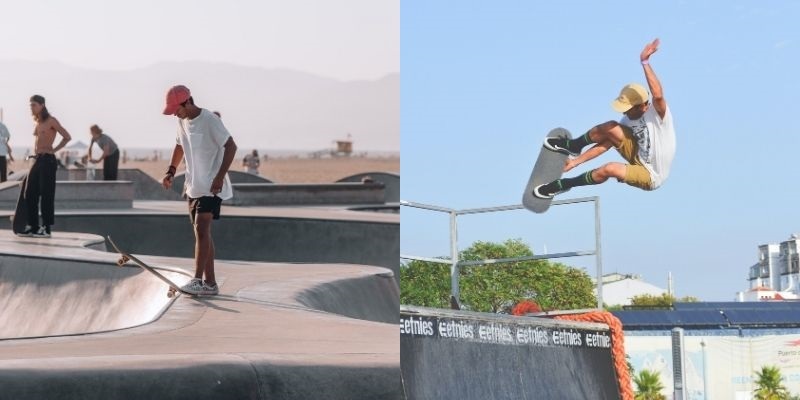
Transition skateboards are crafted for tricks on quarter pipes, half pipes, and bowls where transitions shift from horizontal to vertical at a 90-degree angle. Vert skateboarding, among the most iconic skateboarding styles, is celebrated for its extensive air tricks on massive half pipes. Dropping in on a vert already demands significant bravery.
Skateboarding in pools and bowls has its roots in transitional skateboarding, laying the groundwork for vert. In previous times, skateboarders would ride empty pools, and these revolutionary sessions eventually paved the way for specially constructed skate pools and bowls.
Transition skateboards, be it pool or vert boards, generally boast larger wheels and decks than street setups. The accelerated speeds and significant tricks of transition skateboarding call for a setup offering more stability. A larger wheelbase is also typical in transition setups, enhancing stability and control. Nevertheless, a broader wheelbase may lack appeal if you relish "surfing" within pools and bowls, where tighter turns during carving and direction shifts are preferable.
Street Skateboards
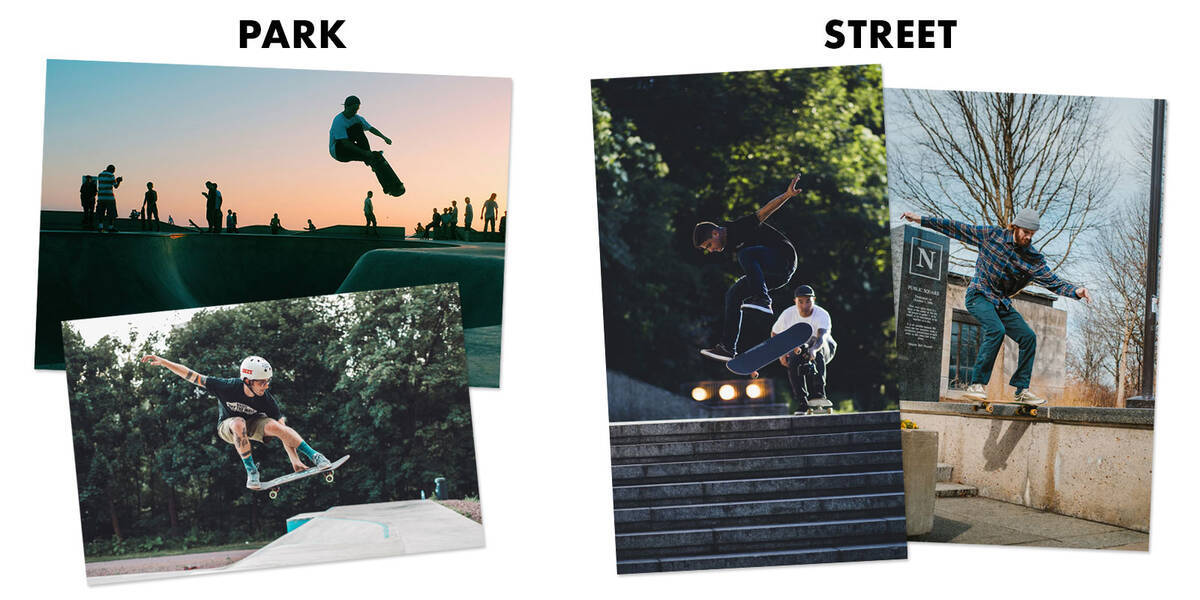
Street skateboards are generally narrower and lower than boards meant for transitions. They feature slightly smaller and harder wheels, providing better manoeuvrability and durability, boosting responsiveness for easier flips and spins.
Street skateboarding is often connected with the creation of boards having kick tails on both ends. This led to the development of the popsicle skateboard deck shape, which is now somewhat standard. The double kicktails allow executing lines with several consecutive tricks by using the skateboard from various angles while performing tricks in fakie stance or popping nollie tricks, among others.
Street skateboarding is an art that involves innovative interaction with urban environments. Skateboarders reimagine cityscapes, turning mundane elements like stairs and handrails into avenues for creativity and exploration. This dynamic exchange between skateboarders and city streets has propelled skateboarding in fascinating new directions since the late 1980s and early 1990s.
Park Skateboards
The ideal skateboard setup for park skating depends on a) your preferences and b) the specific park where you skate most often. Skateparks present a variety of obstacles, including ramps, rails, verts, and pools.
Surfaces vary from concrete to asphalt to wooden floors, and park sizes differ greatly – from expansive competition venues to smaller, improvised spaces for casual sessions with friends.
Thus, there is no standard setup for park skateboarding; if park skating is your primary focus, base your setup on what suits your local park best. For example, if your favourite park has smooth, slippery surfaces, opting for a slightly softer durometer rating may improve grip and performance.
Complete or Custom Skateboard – Are Complete Boards Worth It for Intermediates?
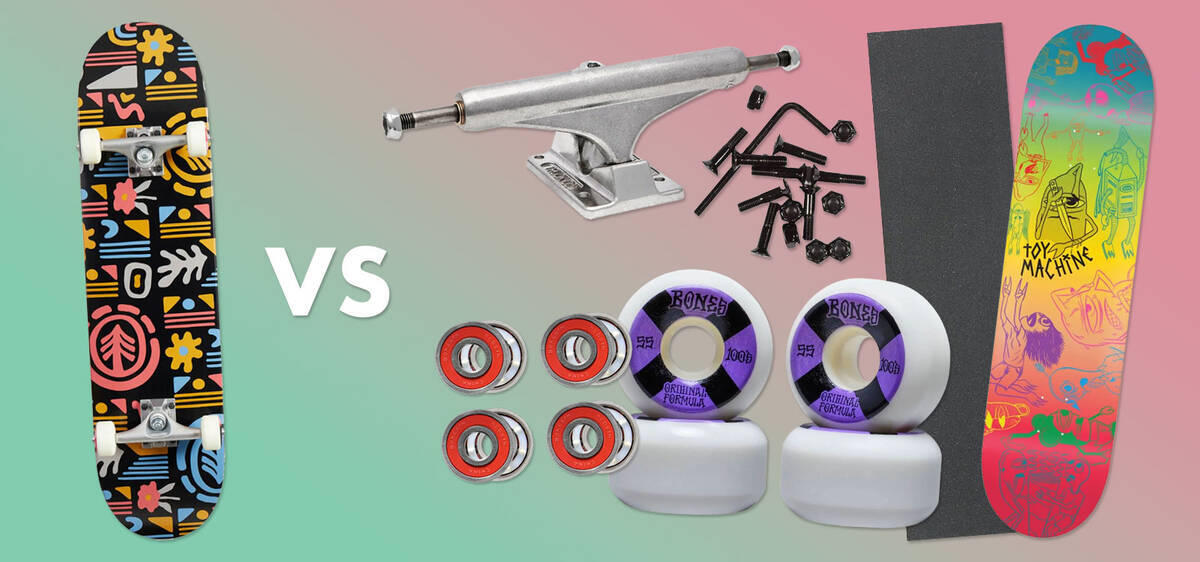
A complete skateboard can be a sensible choice for intermediate skateboarders, especially if they require entirely new components for their setup. Nevertheless, it’s critical to ensure the complete skateboard satisfies your specific requirements and includes quality parts.
Complete skateboards usually consist of parts with lesser quality than those acquired individually, yet they are also more affordable. If you choose a complete skateboard, focus on renowned brands and key characteristics like deck width, wood type (steer clear of Chinese maple), wheel diameter, wheel hardness, and truck manufacturer for adequate durability and performance.
Building your own skateboard enables you to handpick parts according to your specific tastes. Furthermore, you will notice certain parts will deteriorate faster, necessitating customisation.
Your skateboard parts’ lifespan largely hinges on your skateboarding style. For instance, grinds will wear down trucks quicker, whereas powerslides will wear wheels faster. Typically, the deck is the first to wear out and requires more frequent replacement.
- Explore our Collection of Complete Skateboards
- Create a custom skateboard with SkatePro's Custom Skateboard Builder
When to Replace Your Skateboard Deck?

The right time to replace your skateboard deck is when it begins chipping or delaminating, or when it feels less responsive and loses its crisp pop. Even without visible damage like chipping, over time it can become less enjoyable to ride. Ultimately, the time to acquire a new skateboard deck is when its improved performance can elevate your skateboarding experience.
Selecting the Ideal Skateboard Deck
Choosing a skateboard deck requires considerations beyond appearance. Factors like size, shape, concave, and wood type significantly influence performance and comfort. Recognising how these elements interact with your skateboarding style and preferences is essential when searching for the perfect skateboard deck.
- Size: Find the right size considering your shoe size and skateboarding style. The deck width should align with the axle width of your trucks.
- Wood Types: As an intermediate skateboarder, avoid softer wood like Chinese maple, but generally, 7-ply maple serves well.
- Concave: The concave refers to the curvature across the deck’s width. It greatly impacts how the deck grips your feet while riding.
Seek expert advice on skateboard decks here:
How Long Do Skateboard Trucks Last?

High-quality skateboard trucks tend to offer several years of service, but there are indicators to look out for signalling a need for a replacement. Worn hangers affecting grinds or stalls, or grinding all the way through to the axle, means it might be time for new trucks. Should a snapped kingpin occur from intensive usage, replacing just the kingpin is an option. If the bushings deteriorate at a faster rate than other truck parts, consider getting new skateboard bushings for a refreshed feel. Remember, always adjust the tightness of your trucks by tightening or loosening the kingpin nut to suit your preferences!
Check out our range of skateboard trucks and parts for your needs:
Selecting the Appropriate Skateboard Trucks
When purchasing new skateboard trucks, take into account these vital considerations:
- Size: Make sure your truck width matches your deck width to ensure stability and prevent interference with your shoes during tricks.
- Truck Height: Decide between low, mid, or high trucks depending on your needs for stability, wheel clearance, and control simplicity.
- Truck Weight: Evaluate the truck weight, knowing that lighter trucks can be beneficial for tricks, but keep in mind that size impacts weight.
To learn more about skateboard trucks, review our guide:
When to Replace Your Skateboard Wheels
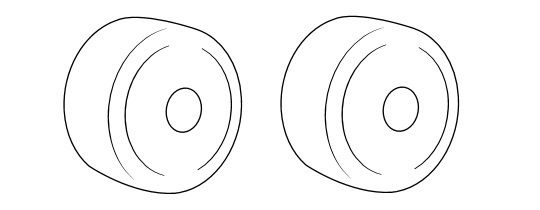
Although skateboard wheels are durable, they will inevitably wear out with continuous use. You may notice them becoming smaller or developing flat spots, which can become bothersome and disrupt your skateboarding. If you encounter these issues, it is time to think about getting new skateboard wheels.
Over time, wheels tend to wear quicker on the outer edge, diminishing the riding surface or contact patch. To ensure even wear and prolong their lifespan, it is advisable to rotate skateboard wheels occasionally. Remove the wheels and swap them in a cross-pattern: the front right wheel becomes the rear left wheel, and the rear left wheel becomes the front right wheel. Repeat this for the remaining wheels. This rotation helps distribute wear evenly across all wheels.
Choosing the Perfect Skateboard Wheels
Here is a brief overview of what to consider when buying new skateboard wheels:
- Size/Diameter: Select the right wheel size based on your skateboarding style and terrain preference. Smaller wheels offer agility and responsiveness, whereas larger wheels provide stability and speed.
- Hardness (Durometer): Choose the right durometer rating for your wheels based on the surfaces you skate on and your preference for grip versus slide. Softer wheels offer more grip and shock absorption, while harder wheels provide better speed and durability.
- Shape and Contact Patch: Consider the wheel shape and the size of the contact patch or riding surface. Narrow contact patches enhance responsiveness and are more suited for tricks, while wider contact patches provide greater grip and stability.
Find further advice relating to skateboard wheels here:
Skateboard Size: Determining the Correct Size Skateboard
When you are deciding on the appropriate size for a skateboard deck, make sure the width suits your feet and personal tastes, as width significantly affects your skating experience. Consulting a sizing chart can assist in determining if a narrower or broader deck is more appropriate according to your shoe size. A deck that's overly narrow might seem unstable, whereas an excessively wide deck could hinder manoeuvrability. Generally, if you wear European size 45 shoes or larger, selecting a deck with a minimum width of 8 inches is recommended to enable efficient landings while performing tricks.
Bear in mind that your skateboarding style and individual preferences are crucial considerations when selecting a skateboard deck size. Those who engage primarily in pool or vert skating might find a wider deck than the chart suggests to be more suitable.
| Skateboard Width | Recommended Age | Shoe size US | Shoe size UK | Shoe size EU |
| 6.5" | 3 - 5 | 6C - 11C | 5Y - 10Y | 23 - 28 |
| 6.75" | 3 - 5 | 7C - 11C | 6Y - 10Y | 24 - 28 |
| 6.825" | 4 - 6 | 9C - 12C | 8Y - 11Y | 26 - 30 |
| 7.0" | 5 - 7 | 10C - 1 | 9Y - 12Y | 28 - 32 |
| 7.125" | 6 - 8 | 11C - 2 | 10Y - 1 | 29 - 33 |
| 7.25" | 7 - 9 | 12C - 3 | 11Y - 2 | 30 - 34 |
| 7.375" | 8 - 10 | 13C - 4 | 12Y - 3 | 31 - 35 |
| 7.5" | 9 - 11 | 1 - 6 | 13Y - 5 | 32 - 38 |
| 7.625" | 10 - 12 | 2 - 7 | 1 - 6 | 33 - 39 |
| 7.75" | 12 - 14 | 4 - 9 | 3 - 8 | 35 - 42 |
| 7.875" | 12 - 14 | 4 - 9 | 3 - 8 | 35 - 42 |
| 8" & Up | 14 & Up | 9 & Up | 8 & Up | 42 & Up |
Access our comprehensive guide:

